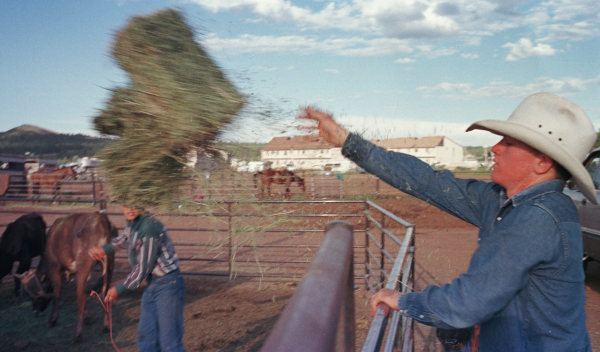Arizona Agriculture the Heat is On!!!
Published
7/1/2014
By Joe Sigg, Arizona Farm Bureau: In agriculture, we work outdoors. And as Arizonans engaged in agriculture, we may feel we know the challenges of working in the heat. Despite this, don’t forget to check yourself and your employees for heat stress or heat-related safety issues especially during summer.
The most important strategy for preventing heat stress is developing a simple plan. OSHA has important advice to follow. Agriculture employers especially must take careful note of key required safety measures to ensure employees are staying cool despite hot environments.

Beyond protective clothing such as always wearing a hat and long-sleeved shirts when outside, it's important to note that for agricultural employers, every two hours an employee works continuously outdoors during temperatures of 95 degrees or higher, the employer must ensure the employee takes a 10-minute net recovery period. The recovery period must be taken, as much as practical, near the end of each second hour of work.
Employers should establish a complete heat illness prevention program to prevent heat illness. This includes: providing workers with water, rest and shade; gradually increase workloads and allow more frequent breaks for new workers or workers who have been away for a week or more to build a tolerance for working in the heat (acclimatization); modify work schedules as necessary; plan for emergencies and train workers about the symptoms of heat-related illnesses and their prevention; and monitor workers for signs of illness. Workers new to the heat or those that have been away from work and are returning can be most vulnerable to heat stress and they must be acclimatized.
To prevent
- Drink water every 15 minutes, even if you are not thirsty.
- Rest in the shade to cool down.
- Wear a hat and light-colored clothing.
- Learn the signs of heat illness and what to do in an emergency.
- Keep an eye on fellow workers.
- "Easy does it" on your first days of work in the heat. You need to get used to it.
If workers are new to working in the heat or returning from more than a week off, and for all workers on the first day of a sudden heat wave, implement a work schedule to allow them to get used to the heat gradually.
Remember these three simple words: Water, Rest, Shade. Taking these precautions can mean the difference between life and death.
In addition to the OSHA campaign on “Water, Rest, Shade”, California has proposed some new rules relating to heat stress. Some of these proposals are worth considering as
- Water provided "as close as practicable" to areas where employees are working, but at a distance of no more than 400 feet unless the employer can demonstrate that conditions prevent locating water within 400 feet;
- Water will be "fresh, pure, suitably cool and provided to employees without charge," borrowing a phrase from the existing agricultural Field Sanitation Standard;
- Shade will be required to be present at all times when the temperature exceeds 80 degrees Fahrenheit;
- The amount of shade should be sufficient for all employees taking meal, rest or recovery periods at any one time;
- Shade must be within 700 feet walking distance unless the employer can demonstrate that conditions prevent locating shade within 700 feet;
- An employee taking a cool-down rest shall be encouraged to remain in the shade and shall not be ordered back to work until any signs or symptoms of heat illness have abated, but in no
event less than five minutes in addition to the time needed to access the shade; - If an employee shows signs or symptoms of heat illness, the employer will monitor the employee during the rest period to determining if the employee is recovering. If the employee is not recovering, the employer must provide appropriate first aid and/or appropriate emergency medical services.
New "high heat" procedures will include:
- The employer must ensure effective employee observation and monitoring by either having a supervisor or designee observe groups of 20 or fewer employees; use a "buddy system" to have employees observe each other; rely on regular communication with a single
employee, or any other means of communication the employer deems effective; - The employer will designate an employee on each worksite who is authorized to call for emergency medical services;
- The employer will conduct pre-shift meetings to review the high-heat procedures, encourage employees to drink plenty of water and remind employees of their right to take a cool-down rest when needed;
- For agricultural employers only, for every two
hours an employee works continuously outdoors during temperatures of 95 degrees or higher, the employer must ensure the employee takes aten minute net recovery period. This recovery period must be taken, as much as practical, near the end of each second hour of work.
For more information contact regarding this issue or others, contact joesigg@azfb.org or anakennedy@azfb.org.
Editor’s note: OSHA provided the information for this article on how to avoid heat stress.